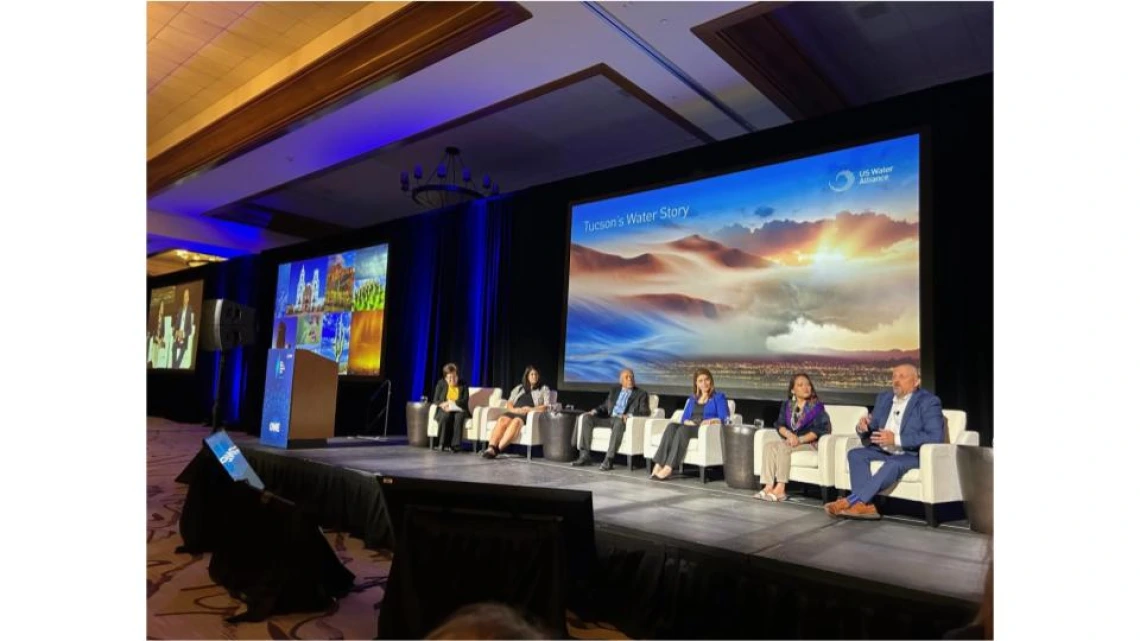The Indigenous Resilience Center administrative staff, from right to left: director and co-founder Karletta Chief, program coordinator Bernice Rodriguez, manager Daniel Sestiaga, Jr. and outreach coordinator Torran Anderson. The center was recently awarded $2 million from the Waverely Street Foundation to expand existing programs and support Indigenous experts, scholars and outreach specialists in developing local solutions to climate issues.
“In those listening sessions, we sit there and listen to, what are the concerns, the priorities, and really try to understand what they would like us to do – why did they invite us there to their home?” Chief said. “From there, we take their priorities and begin to think about what are some areas we could help.”
Vicky Karanikola is an assistant professor of chemical and environmental engineering at the University of Arizona and has assisted with some projects. She said these listening sessions are crucial, as Indigenous people have been working with this land for generations.
“Western societies haven't been really reaching out to the people [who] have been living in very rough environments for many, many, many years, and they just survive just fine,” she said. “They have grains that have been alive for thousands of years that are surviving with no irrigation at all … what I'm really hoping from all the projects that we're doing is we really highlight the knowledge of the communities and change the rhetoric of how we're doing work with communities.”
So far, the leaders have worked on projects such as setting up solar water systems that do not rely on electricity, or providing a simple, off-grid water filtration system that could be made using “parts from a Home Depot,” Chief said. They also do water audits to determine what is usable or consumable on tribal land.
Karanikola said their goal is to not just make a technological solution and walk away.
“We care that this is sustainable,” she said. “If it's not being used after we are gone or the communities don’t want it, then we need to go back to the drawing table and figure out what it is that was not working.”
The center received a $2 million grant from the Waverley Street Foundation this month to expand the projects, hire more Indigenous experts, and do more outreach efforts over the next two years.
But beyond the desire for good drinking water or personal hygiene, Chief said Indigenous people view water not as a commodity, but as sacred. That’s part of the reason why the average American uses around 100 gallons of water a day, whereas someone on the Navajo Nation only uses 7 gallons a day.
She hopes others adopt that thinking when it comes to using — or misusing — water.
“Water is what connects not only humans to each other, but humans to every species and the environment, which includes the plants, the different animals, every micro entity within the environment that we don't see,” she said. “When you think about water in that way and how it gives life and connects all living things, then you automatically want to conserve water.”
This story was supported by The Water Desk, an initiative from the University of Colorado Boulder’s Center for Environmental Journalism.
This story was produced by the Mountain West News Bureau, a collaboration between Wyoming Public Media, Nevada Public Radio, Boise State Public Radio in Idaho, KUNR in Nevada, KUNC in Colorado and KANW in New Mexico, with support from affiliate stations across the region. Funding for the Mountain West News Bureau is provided in part by the Corporation for Public Broadcasting.


